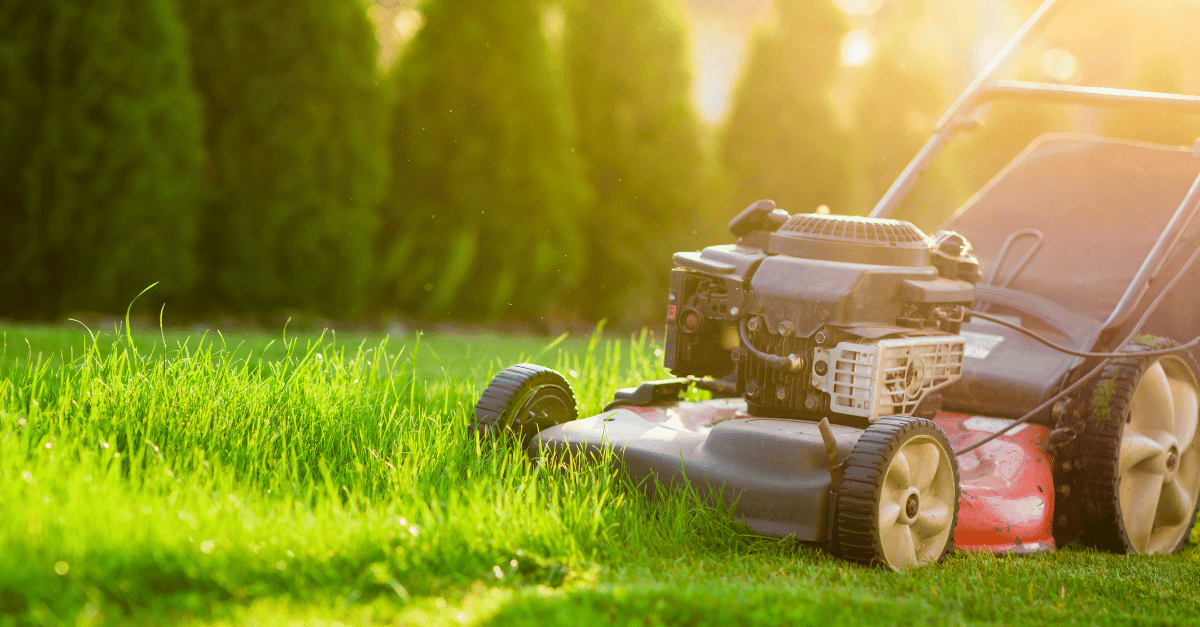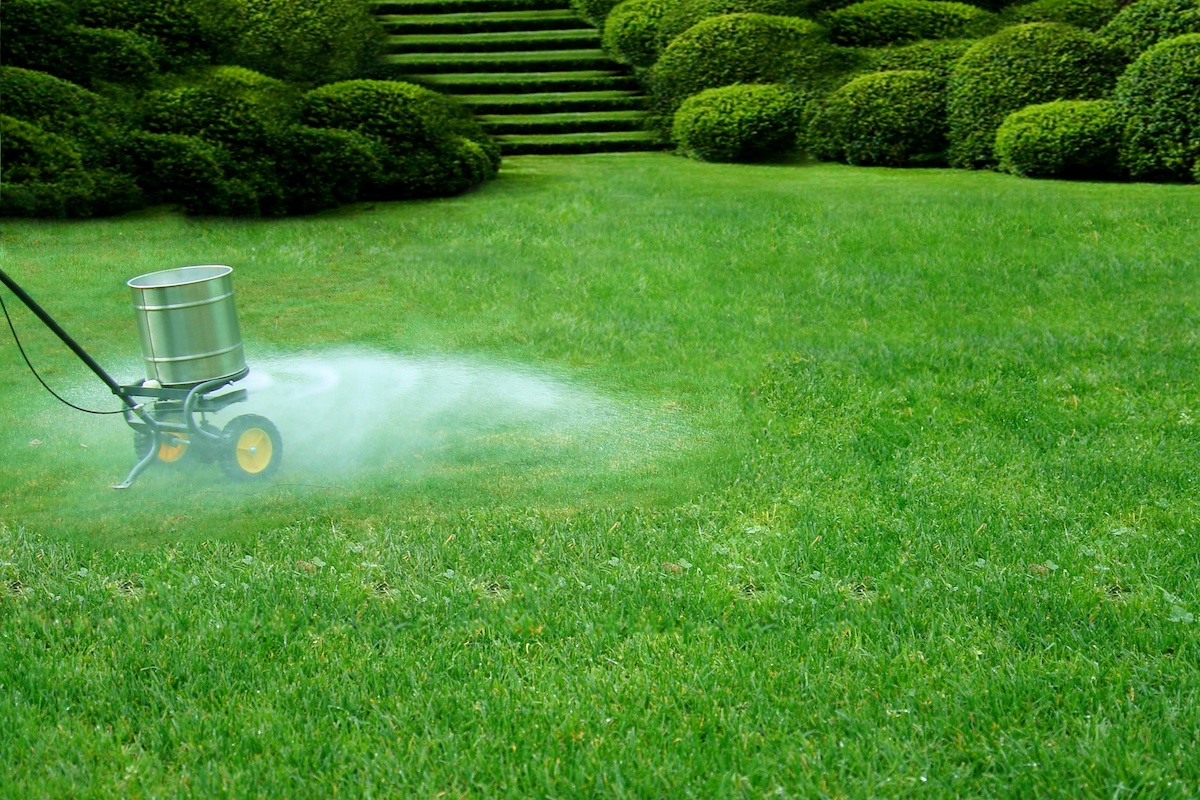Maintaining your lawn is an annual responsibility, and it can occasionally feel quite stressful to know what to do as the seasons change. The grass in your garden is a living organism with seasonal demands. We’ve created this helpful lawn care calendar to make things simpler and maintain the best-looking lawn possible.
Consider it your go-to manual for any questions you may have about the demands of your grass. You’ll always know what to do with this calendar, regardless of the season. Let’s go to work making your lawn the talk of the neighbourhood, then!
Taking care of your lawn this spring
Because your grass is preparing for a significant growth spurt, spring is a critical season for lawn and landscape maintenance. To guarantee a lush, healthy lawn for the upcoming year, it’s critical to get everything in order now.
Try to mow your grass once a week in the spring. Mowing on a regular basis promotes robust growth and keeps everything looking neat. Regular mowing also keeps weeds from growing and establishing, preserving the greatest possible appearance for your grass. One excellent method for thickening your grass is to sow more seeds in the spring. By covering barren areas, overseeding gives your grass a fuller, more vibrant appearance. This is especially helpful in the spring as it helps revitalise regions that may have been sparser during the winter.
This is the ideal time to apply the top dressing to your soil to boost its quality. This procedure helps improve the growing conditions for your lawn by adding nutrients. Rich in nutrients, the soil supports strong development and fortifies your lawn against future stresses. Compacted soil can impede the flow of water and nutrients to the roots over time. Allowing air to get into the soil through the creation of holes in the grass promotes better absorption. This ensures that the moisture and nutrients your grass needs to thrive will be provided.
In the springtime, pests are more active. To avoid causing any harm to your grass, it is advisable to take action early on. Watch for warning indications in your lawn, including patches of dead grass or strange patterns, and take prompt action to control any infestations.
Keeping your lawn healthy requires removing thatch and moss in the spring. Your grass will be able to breathe easier and grow more efficiently after scarification helps to remove these undesirable materials. Because grass illnesses flourish in thatch layers, this procedure can also lessen the chance of getting them. Herbicide treatment of immature weeds will prevent them from taking over your grass. Dealing with them early on, before they have a chance to establish themselves, is far easier. Frequent weed management keeps weeds out of your lawn’s way and keeps grass and weeds from competing for resources.
Lawn care during the summer

Your lawn really starts to flourish in the summer and shows off all of your hard work. For things to remain lush and green, though, this season also requires a little extra attention.
It is recommended that you mow your grass twice a week throughout the warmer months. Summertime mowing not only keeps your lawn nice but also promotes rapid development. Just be careful that the grass doesn’t get too short; longer blades assist retain moisture and shade the earth.
Watering your grass is a crucial part of summertime lawn care. Rainfall is usually a good indicator that you should probably avoid hand-watering the lawn. In a hot and dry summer, it may be necessary to water your lawn once or twice a week. The best time to water is early in the morning when the grass can absorb moisture before the day gets too hot. This will keep your lawn moist and stop it from drying out.
Additionally, pests like ants become more active throughout the summer. Look for the distinctive dirt mounds that represent anthills. Early detection and treatment of insect issues might stop them from getting worse. Many chemical and natural alternatives are available to ward off these little intruders.
Lawn care in the autumn
When the days become shorter and the temperature drops during the approaching winter months, it’s important to prepare your grass. It will survive the winter and regrow strongly if you take care of your lawn now.
Autumnal mowing is still vital, even though it’s growing cooler. You can resume cutting the lawn just once every week. As your grass moves into its slower development phase, regular mowing keeps it looking nice and healthy. You can increase the thickness and colour of your grass by sowing additional seeds in the autumn. By covering any sparse or thin areas, overseeding promotes denser, healthier grass. Come springtime, this small action can have a significant impact.
This time of year sees a lot of heavy rain, which can compact the soil. Aeration is crucial, as we’ve previously explained, to lessen this. By allowing the soil to breathe, aerating your lawn helps the roots absorb more water and oxygen.
Since it loves moisture, fall is the best season for moss growth. Look out for any areas that have moss and take care of them right away. You can stop moss in its tracks and keep it from taking over your lawn by raking it out and applying moss management chemicals. Brown or yellow areas on your lawn can also be caused by fungus and grass diseases, which thrive in the moist autumn weather. To preserve your grass and keep it healthy, you should think about getting professional treatment if you see any symptoms of lawn illness.
Additionally, remember to use a rake to remove any dead leaves that may be falling into your garden. If leaves are left on the grass, they can trap moisture and obstruct sunshine, which makes the climate perfect for pests and illnesses.
Lawn care during the winter

Your lawn may suffer during the winter, but with the correct garden maintenance tips, you can keep it strong until April. Poor drainage may be indicated if you see water collecting on the surface. By facilitating better water penetration into the soil, aeration helps minimise waterlogging and encourage stronger roots.
Enough nutrients must be applied to your grass all winter long. Use a winter lawn fertiliser made just for that season to provide your grass with the nutrients it needs to stay healthy. This strengthens the grass and gets it ready for the next growing season.
Occasionally, entrusting your lawn maintenance to professionals might provide significant benefits. Expert gardening services offer many benefits, such as in-depth expertise and treatments created especially to satisfy your lawn’s needs. By working with professionals, you can guarantee that your grass receives the best care possible throughout the year, giving your outside space a more vibrant, lush lawn.
Conclusion
To keep good grass throughout the year, regular attention and care are required. Follow this seasonal lawn care plan, and consider hiring professional gardening services, to have a beautiful, vibrant lawn that you can enjoy all year long. Regular chores like fertilising and mowing are necessary to keep lush grass.
Additionally, keep in mind that you may always contact for professional assistance if you ever feel a little overwhelmed. Your lawn may be the talk of the neighbourhood all year round with a little work and the correct assistance. Enjoy gardening!





